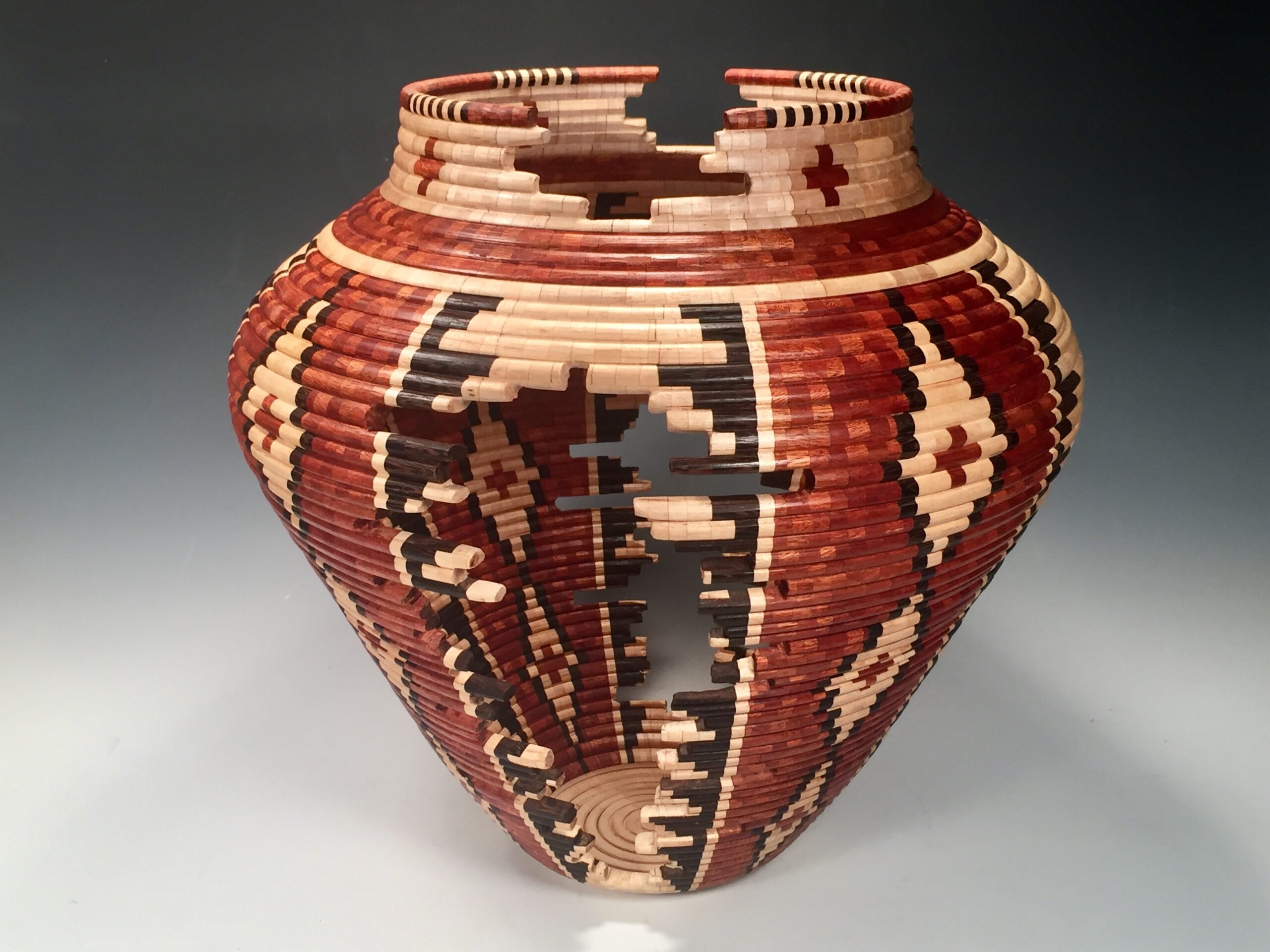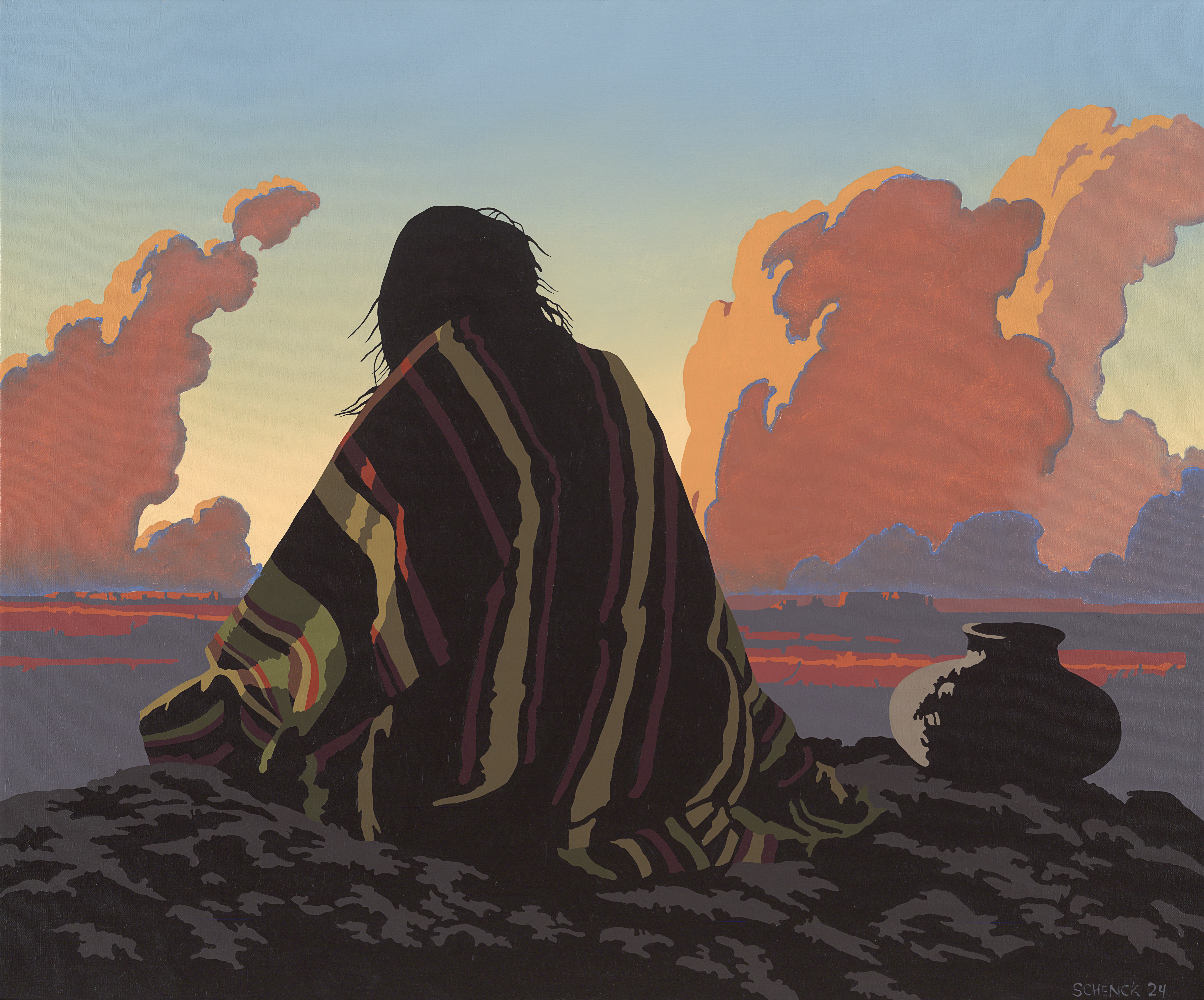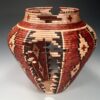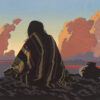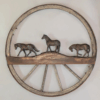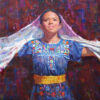If you look for dogs in most traditional Western art, you tend to find them in the lower left-hand quadrant. They’re sitting at the feet of a cowboy in front of a roaring campfire, or they’re poised just out of kicking range of a horse at the center of the canvas. Their eyes tend to be looking at the focal point of the painting—a human being, a larger animal, an important event they’re witnessing. Their eyes tell the viewer where to look. They’re serving in their traditional role as man’s best friend. Man remains at the center.
Not so with Veryl Goodnight’s stunning new paintings and sculptures that depict the smart and intrepid sled dogs of the Gold Rush era, a rich subject almost completely untapped by other Western artists. In her pieces, the dogs are the focus. Their gaze is most often fixed on a point ahead of them on the trail, an unseen destination, an obstacle, a goal. In some paintings, their eyes meet the viewer’s—intelligent, curious, and a little bit wary.
Read the full article in the March/April 2021 issue.
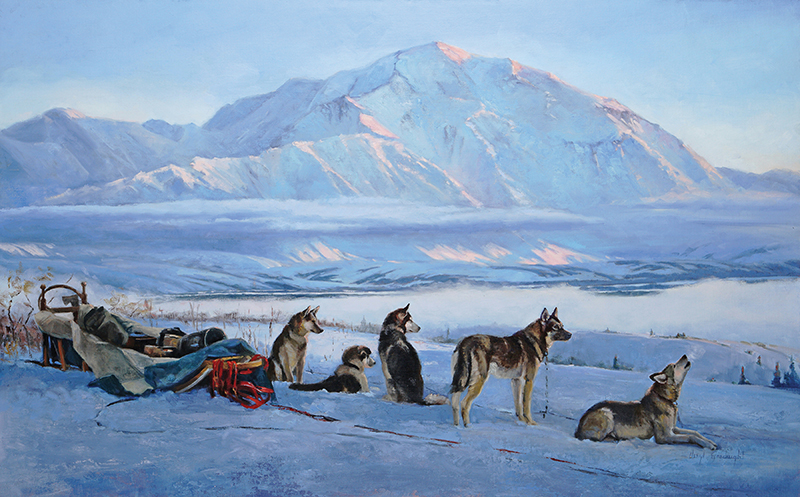
Under The Spell of Denali
Oil
30” by 48”
“On March 3, 2019, artist friend, Ralph Oberg, and I landed on Wonder Lake in Denali National Park in a ski-equipped plane. A guide with 13 powerful freight dogs picked us up and took us to the cabins, where we were greeted with this view of 20,310-foot Denali, the highest mountain in North America. As if that were not enough, the dogs were picketed between us and the mountain. Ralph’s main interest was the mountains and mine was the dogs—totally compatible interests, as we were on the same trails used for the first ascent of Denali in 1913, a feat that required dog teams. I will be forever grateful to Ralph and to both of our understanding spouses for making this trip possible.”
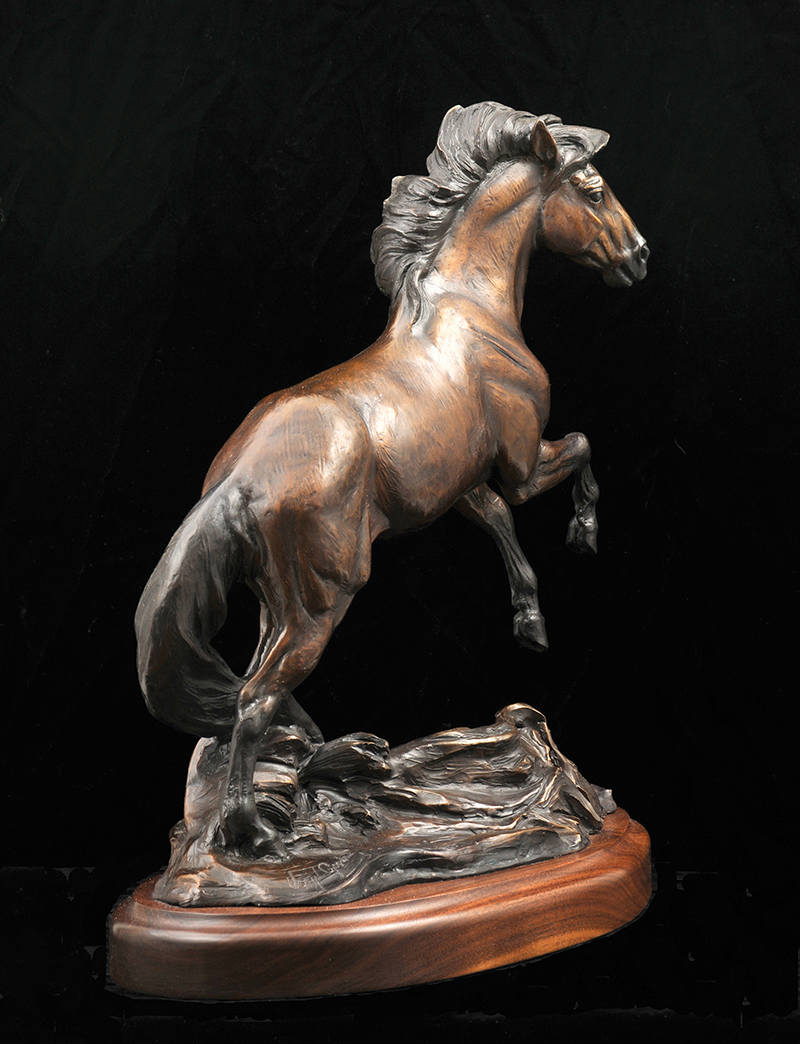
Untamed
Bronze
18” by 20” by 9”
“As a child, horses were my first artistic inspiration. Later, the horse became my greatest teacher. At first I saw only the surface, then realized I had to understand their bones and muscles in order to represent them convincingly. After hundreds of hours in corrals, with a clay horse on a sculpture stand, I came to respect each horse as an individual being.”
